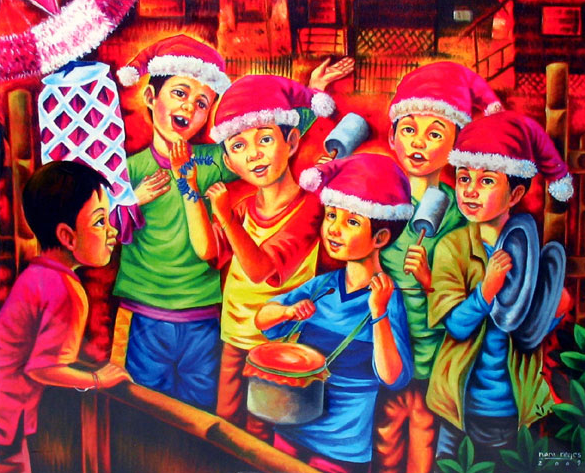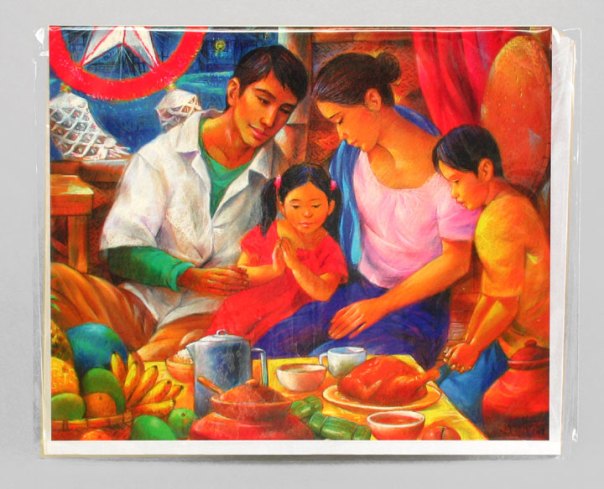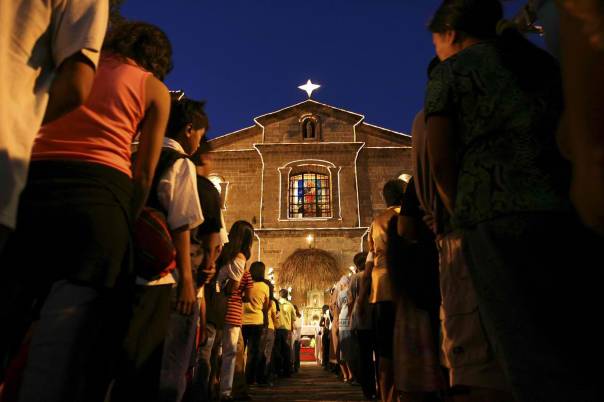Christmas Season, More Fun in the Philippines
Christmas in the Philippines, one of two predominantly Catholic countries in Asia (the other one being East Timor), is one of the biggest holidays in the archipelago. The country has earned the distinction of celebrating the world’s longest Christmas season, with Christmas carols heard as early as September and lasting until Epiphany, the feast of the Black Nazarene on January 9 or the Feast of the Santo Niño de Cebú on the third Sunday of January.
If Mexico has piñatas, the Philippines has its parol. Of course, a parol is not something to hit with a stick. It is a Christmas lantern, most commonly in the shape of a five-pointed star. The bamboo or rattan frame is covered with rice paper, tissue or cellophane. Almost every family either builds or buys one to hang by the window or door. Shopping malls construct giant versions of parol.
Traditionally, a candle was placed inside for light to shine through; for safety reasons, people now use bulbs or even a flashlight. Families, schools and other places also display a creche or nativity scene called belen. Christmas trees made of plastic are decorated with lights, tinsel and balls.
The Tagalog word for gift is regalo, but Filipinos have a special word for “Christmas gift” — pamasko. The Filipino version of Secret Santa is called Monito Monita or Kris Kringle. Students in their classes and office workers all hold gift exchanges during the Christmas season. Children receive fresh bills of money called aginaldo, usually when they visit their godparents and elderly relatives on Christmas morning.
Philippine Christmas is not complete without music, and the season is celebrated by Filipinos through caroling. In most urban centers and rural areas in the Philippines, a group of carolers visit houses to sing Christmas songs. Some of these carolers raise funds for less fortunate families through caroling, while others are simply doing it for the joy of singing. Some carolers may be a group of friends, or belong to the same community or civic organization. Others may be family relatives who have made it a tradition to sing together as a family.

In the neighborhood, a group of kids may form together as amateur carolers and visit houses every night. They will be more than happy to receive coins or candies as reward for singing Christmas songs. They sing even out of tune, and are creative in using tin cans, plastic containers, and bamboos as their musical instruments. It is the fun of doing it that matters, out of tune or not!
Mostly Catholics, Filipinos begin a novena (a series of nine masses) on December 16th. The masses are part of the cherished religious tradition of Simbang Gabi, which literally means “Night Worship.” Filipinos go to church at four o’clock in the morning and afterward have breakfast together. A traditional drink during this season is a warm ginger tea called salabat and a traditional treat is a flat but thick yellow rice cake called bibingka.
What every Filipino looks forward to is Noche Buena, the grand family dinner after the midnight mass. Christmas morning is the time for visiting relatives. Filipinos wear new if not their best clothes. Children do mano, which is kissing or bringing to their forehead the hand of an elderly person. This is when they receive their pamasko, certainly aguinaldo from godfathers and godmothers. Christmas lunch and Christmas dinner are with family.

MALIGAYANG PASKO!! (Merry Christmas!!)
Posted on December 16, 2012, in Traditional Filipino Occasions and tagged Carols, Christmas, Lanterns, Simbang Gabi. Bookmark the permalink. Leave a comment.



Leave a comment
Comments 0